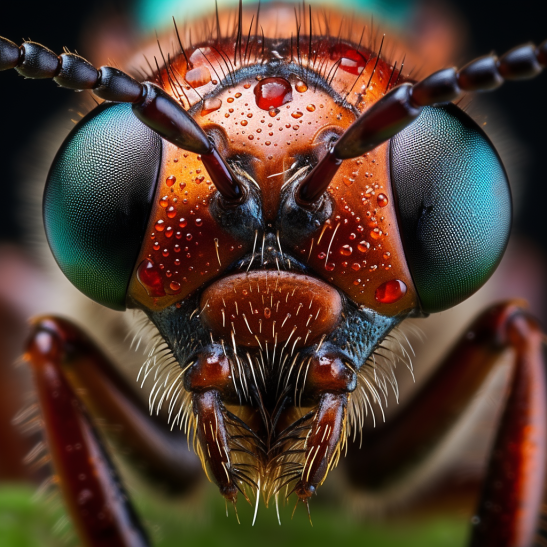Entomology, the scientific study of insects, offers a vast and diverse world of fascinating creatures. Macrophotography in entomology provides a unique opportunity to delve into the intricate details of these tiny organisms, revealing their beauty, complexity, and importance in our ecosystems. In this article, we will explore the art and science of macrophotography in entomology, from equipment and techniques to the incredible stories these photographs can tell.
Chapter 1: The Essentials of Entomological Macrophotography
1.1 Understanding Your Subjects
Before embarking on your journey into entomological macrophotography, it’s crucial to understand the subjects you’ll be working with. In this section, we’ll cover:
- Insect Diversity: An overview of the incredible diversity of insects and the unique features that make each species interesting to photograph.
- Behavioral Patterns: Understanding the behavior of insects can help you anticipate their movements and capture more engaging photographs.
- Preferred Habitats: Discover where to find different types of insects, whether in gardens, forests, or aquatic environments.
1.2 The Right Gear
Effective macrophotography requires specific equipment. We’ll explore the following:
- Camera and Lens: Choosing the right camera body and macro lens for capturing insects up close.
- Tripods and Supports: The importance of stable platforms for sharp, detailed shots.
- Additional Accessories: Exploring essential accessories like extension tubes, ring flashes, and diffusers.
Chapter 2: Techniques for Capturing Insects
2.1 Getting Close
Learn how to approach insects safely and get close enough for detailed shots without causing distress or harm.
2.2 Focusing and Depth of Field
Master the art of focusing on tiny subjects and managing depth of field to highlight specific features.
2.3 Lighting and Diffusion
Discover techniques for proper lighting, including natural light, flash, and diffusers, to achieve optimal results.
Chapter 3: Composition and Creativity
3.1 Framing Your Subjects
Explore various composition techniques to make your insect subjects stand out in your photographs.
3.2 Capturing Behavior
Learn how to capture intriguing moments of insect behavior, such as feeding, mating, and molting.
Chapter 4: Ethical Considerations
4.1 Respecting Wildlife
Understand the importance of ethical practices in macrophotography to minimize disturbance to insects and their habitats.
4.2 Conservation Messaging
Discover how your photographs can contribute to insect conservation efforts by raising awareness about these crucial species.
Chapter 5: Showcasing Your Work
5.1 Building a Portfolio
Learn how to curate and present your entomological macrophotography portfolio effectively, whether through exhibitions, websites, or social media.
5.2 Educational Outreach
Explore opportunities to use your photographs to educate others about the importance of insects in our ecosystems.
Conclusion
Entomological macrophotography allows us to unveil the intricate world of insects, showcasing their beauty and significance in the natural world. Armed with the right knowledge, equipment, and ethical principles, you can embark on a rewarding journey of capturing insects in incredible detail. Your macrophotographs can not only inspire awe and appreciation for these remarkable creatures but also contribute to our understanding of their role in the ecosystems we share. So, grab your camera, venture into the great outdoors, and start photographing the captivating world of insects. Happy shooting!
